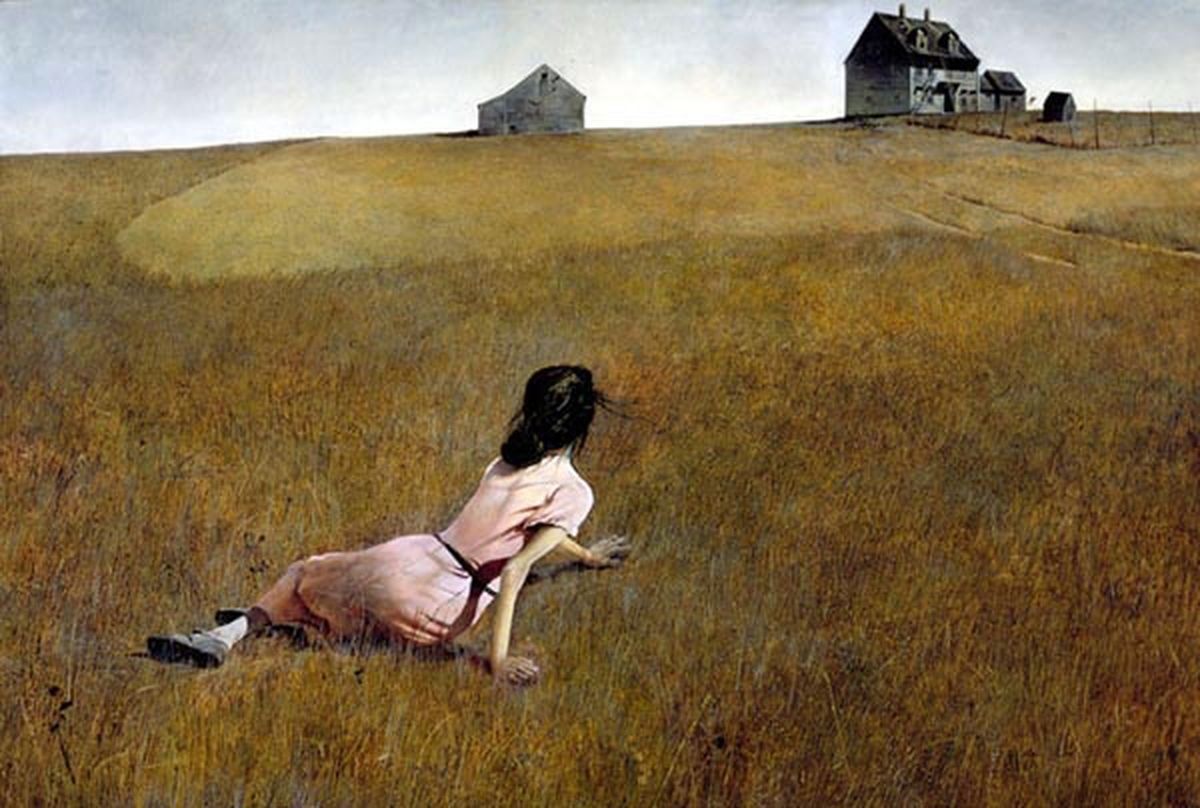Beloved and reviled, artist Andrew Wyeth dies at 91

Andrew Wyeth, best-loved painter of wistfulness, rural bleakness, menace, Puritanical solitude and an America lost to 20th-century dry rot, died Friday morning in his sleep at the Wyeth family estate in Chadds Ford, Pa. He was 91. He died in the sort of weather he loved, the empty cold and the sharp sunlight of the dead of winter.
“America’s best-known and best-loved artist,” said a catalogue for a 1996 show at the Baltimore Museum of Art, before it elevated him still higher: “America’s artist.”
At a White House dinner in 1970, Richard Nixon toasted Wyeth as an artist who “caught the heart of America.” Critic Jay Jacobs once called him “the spiritual leader of Middle America.”
As such, he took a beating from critics who attacked him as morbid, mawkish and a “Martha Stewart existentialist.” He made it easy for them with his morbid coyness, and his attempts to claim credentials as the sort of abstractionist they admired.
Coy, as in a painting called “Brown Swiss,” which showed an off-white farmhouse reflected in a pond and surrounded by brown pasture with no cows in it. He liked to say that his most famous painting, “Christina’s World,” might have been better without Christina in it, a crippled, withered woman in a pink house dress dragging herself up a parched hill toward a weather-beaten Maine farmhouse.
Throughout his career, Wyeth and modernists tried and failed to reconcile. The Museum of Modern Art bought “Christina’s World” in 1949, but Wyeth continued to be scorned by those who eschewed emotions associated with beauty, and found virtue instead in progress, originality, abstraction, shock, pop culture and politics.
“I honestly consider myself an abstractionist,” Wyeth said in 1965. He said his biggest failing was too much “subject” in his work. But it was his realism and his subject matter that won him the love of millions of fans.
He was born in Chadds Ford. His father was N.C. Wyeth, who painted wildly vital illustrations of books such as “Treasure Island” and “The Last of the Mohicans.” N.C. found beauty in melancholy, too: “Anything that I appreciate keenly and profoundly is always sad to the point of being tragic … so sad because it is all so beautiful, so hopeless.”
Both Andrew and his father may have seemed to carry the banner for foes of modernism, but they both – Andrew, in particular – had the 20th-century knack for success through making unhappiness beautiful, in the manner of Edward Hopper, Mark Rothko, Ernest Hemingway or Miles Davis. Wyeth’s son Jamie has followed the family tradition.
In 1940, Wyeth married Betsy James, who soon became a major power in the family, managing Wyeth’s business and supplanting his father.
In the 1980s she figured as an actor in the drama surrounding the “Helga” nudes.
It was claimed on the covers of newsmagazines that Andrew Wyeth, grand old man, had a “stunning secret” – for years, unknown to Betsy, he’d been drawing and painting a model named Helga Testorf, another German immigrant, a sturdy, blond mother of four and housekeeper to his sister Carolyn. Hints of hanky-panky in the Kuerner house, where Wyeth and Testorf met. Scandal! Now Wyeth would have the same creds as Picasso or de Kooning.
The drama ended with accusations that the drama was concocted, that the paintings had not been “secret,” that Betsy had known about them. Carolyn dismissed rumors of romance: “It’s a bunch of crap.”
And it turned out that the Helga paintings had been in the public eye since the late ’70s. Stories would be told and changed and retold.
With all the publicity, Leonard E.B. Andrews, a Pennsylvania publisher, reportedly turned a $6 million investment in the paintings into a $45 million sale to a Japanese collector, and was a force behind their exhibit at the National Gallery.
Though Wyeth had been described as a master technician by friends and foes, the Helga paintings opened this redoubt to critics. The Washington Post’s Paul Richard not only pooh-poohed the eros of the Helga nudes by calling them “monotonous” and “tepid,” he also pointed out that “quick, brusque pencil drawings dominate this show, and in almost every one – in one passage or another – Wyeth’s lines go dead.” And, of a study: “Her left shoulder seems to run straight into her head. Her left forearm is too long. Both hands are a mess.”
But more important, Wyeth was loved, admired, defended and respected by countless Americans not because of either his realism or his abstraction but because of the way he made us feel.
For all his realism, the America he shows is dead and gone, “lost and by the wind grieved,” as Thomas Wolfe put it.
He is survived by his wife and two sons, Jamie, the painter, and Nicholas, an art dealer.